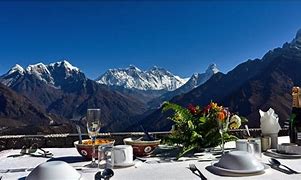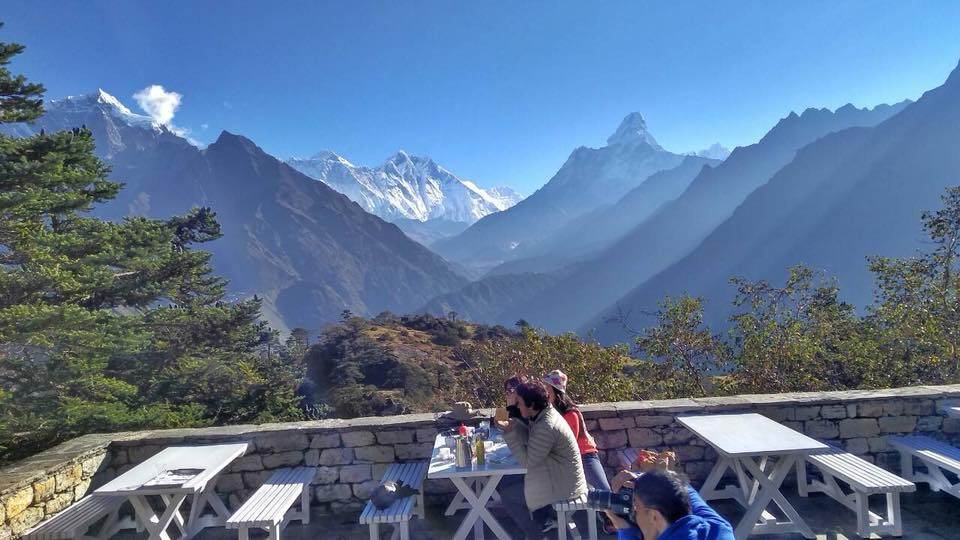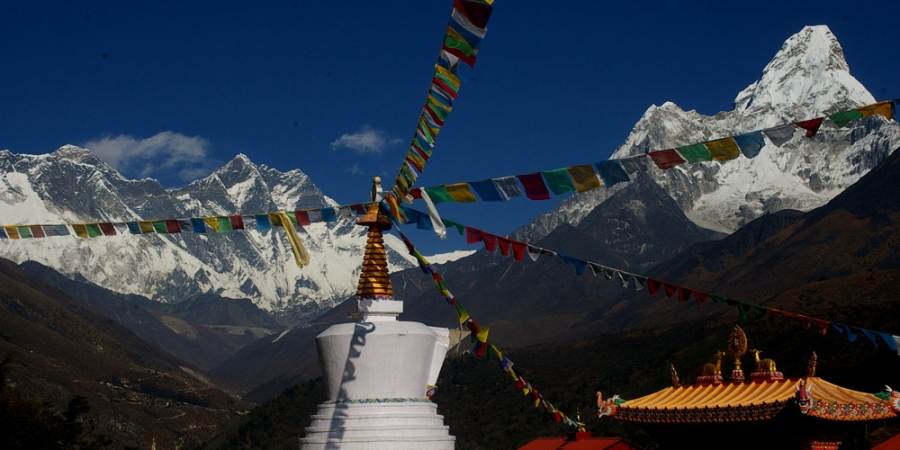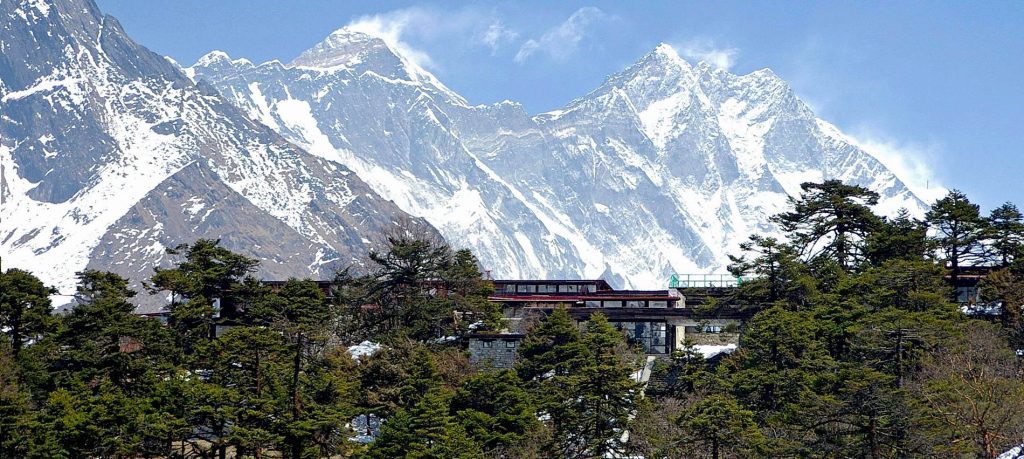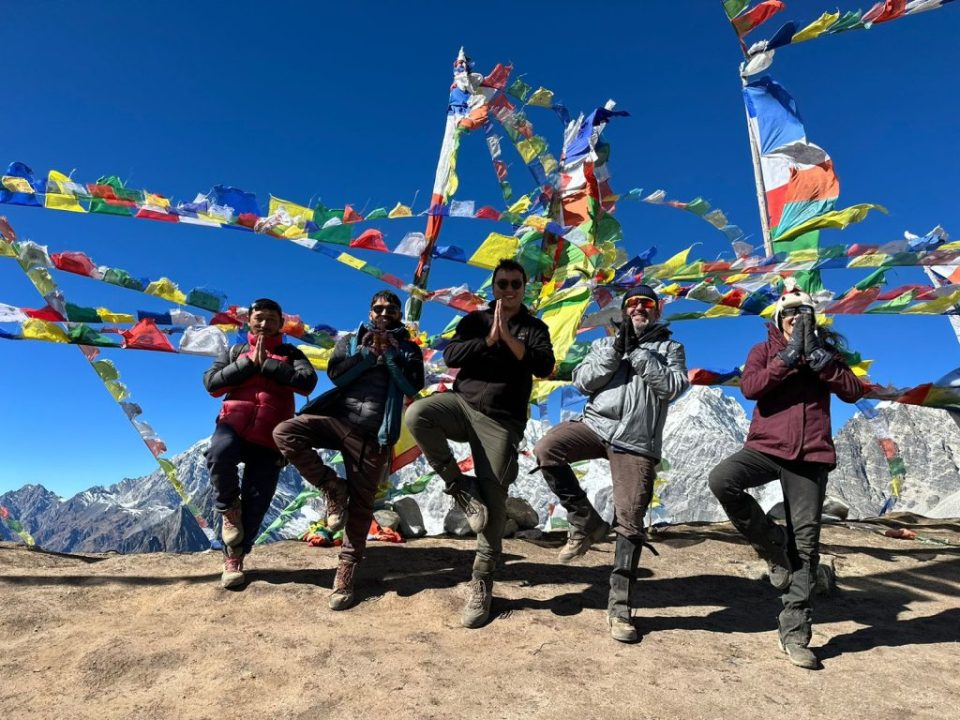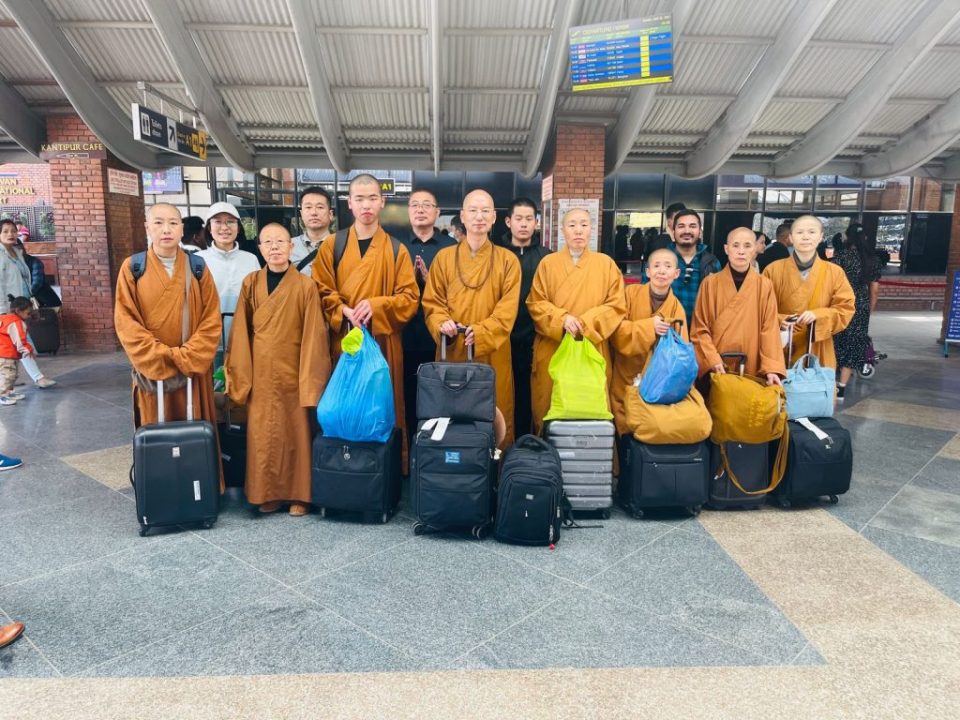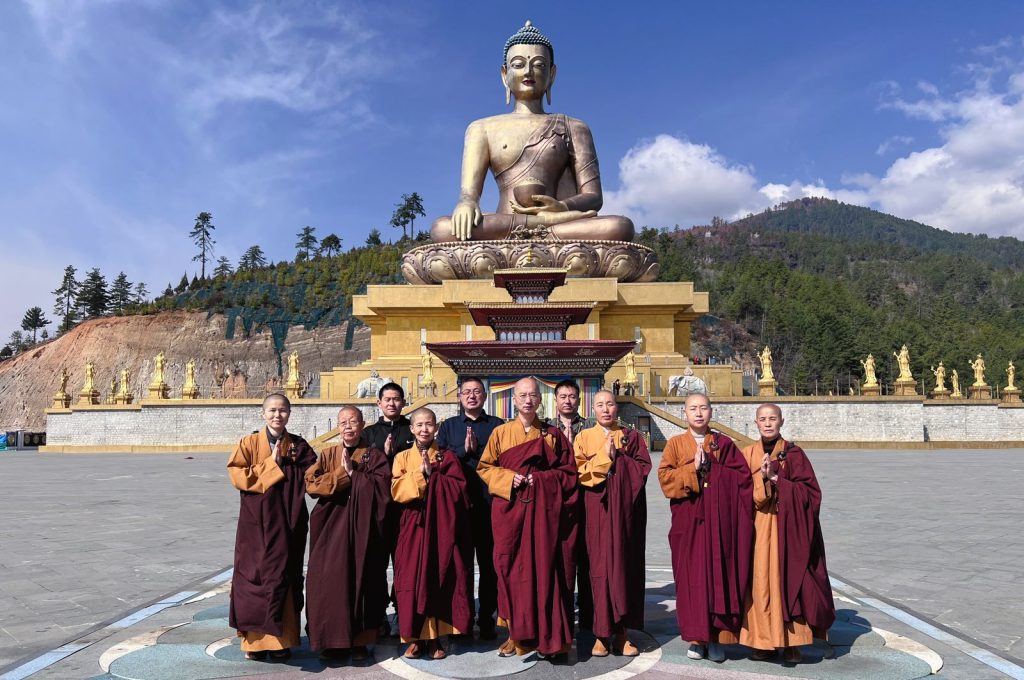Luxury Trek to Hotel Everest View
Trip Introduction
This is an excellent alternative to our standard 10-day tour to Everest View if you are busy. The trek begins with a 35-minute flight from Kathmandu to Lukla. Trek for 6 days in the Khumbu region, with breathtaking views of Everest, Ama Dablam, Lhotse, KongdeRi, and Kusum Kanguru. We follow the Dudh Koshi River from Lukla, over multiple suspension bridges, enter Sagarmatha National Park, see Himalayan flora and animals, and hike through gorgeous Rhododendron forests to Namche Bazaar, where we stop for the day to assist acclimatization.
Those who do not wish to walk to Everest Base Camp but wish to have a closer look at Mt. Everest and the other Khumbu Mountains as well as learn more about the famed Sherpa people’s culture. The Everest view trip gives breathtaking views of beautiful mountains. With some of the most beautiful scenery, history, and culture. As well as a range of unique opportunities to engage yourself in the Nepali culture.
The trail continues from Phakding into the Sagarmatha National Park. The forest is a large conservation area in Nepal’s Everest region. Mt. Everest, along with the surrounding Everest region, is a popular trekking destination because of its magnificent natural beauty, friendly people, and rich cultural legacy. At 13000 feet, Hotel Everest View was featured in the Guinness Book of World Records in 2004 as the World’s Highest Placed Hotel. The hotel is well-known for its superb cuisine, and it provides one of the best dining experiences in the Khumbu region.
Trip Facts
| Country | Nepal |
| Region | Everest Region |
| Duration | 10 days |
| Maximum Altitude | 3,880m/ 12401ft |
| Grade | Moderate – Demanding |
| Accommodation | Hotel and Lodges |
| Attractions | Khumjung, Namche Bazaar, Everest, Ama Dablam, Lhotse etc. |
| Best Season | Mar, Apr, May, Sep, Oct, Nov |
Trip Highlights
- Trek around the Khumbu region’s easiest paths.
- Admire the panoramic views of Mount Everest and the surrounding Himalayas.
- Explore the world-famous Sherpas’ unique and diverse cultures.
- At the highest elevation, you may get a bird’s eye view of the surrounding area.
- Experience the only hotel in the world that is located at a high altitude.
- Have a beautiful flight from Kathmandu to Lukla.
- Trek through the Sagarmatha National Park and see a variety of flora and fauna, including Himalayan Thar, Musk Deer, and Snow Leopard.
- Capture the breathtaking sunrise above the massive Himalayas.
- Enjoy Tibetan culture through colorful prayer flags, monasteries, and chortens.
Is This Trek Appropriate for You?
- The difficulty of the Everest View Trek ranges from Moderate to Challenging. If you are physically and psychologically prepared and motivated to do so, you can easily finish this trek.
- You’ll be on the trail for six days. It is possible to complete the trail in as little as 3 hours or as much as 8 hours.
- The trek isn’t difficult; there’s no climbing or scrambling involved, but it is rocky and hilly.
- While trekking, you will gain 200 to 400 meters in elevation each day. This trek will take you to a height of 3, 880 meters.
- Because of the weather and remoteness of this walk, as well as dealing with the high altitude, it is necessary to take it slowly and stay hydrated.
Itinerary
| Days | Activities | Duration |
| 1. | Arrival at TIA Kathmandu (1,300m/ 4,264ft) | |
| 2. | Fly to Lukla and Trek to Phakding (2800m/ 9,187ft) | 3-4 hrs |
| 3. | Trek from Phakding to Namche Bazaar (3,438m/ 11,280ft) | 6-7 hrs |
| 4. | Trek from Namche Bazaar to Hotel Everest View (3880m/ and hike to Khunde Peak (4200m/ 13,780ft) | 7-8 hrs |
| 5. | Hike from Hotel Everest View to Khumjung (3,780m/ 1240ft) | 4-5hrs |
| 6. | Trek from hotel Everest view to Monjo (2,840m/ 9,318ft) | 4-5 hrs |
| 7. | Trek from Monjo to Lukla (2,860m/ 9,383ft) | 4-5hrs |
| 8. | Fly from Lukla to Kathmandu (1,300m/ 4,264ft) | 35mins |
| 9. | Rest Day in Kathmandu | |
| 10. | Departure |
Itinerary
Departure from : Kathmandu, Nepal
Arrival On : Kathmandu, Nepal
Day 1
Arrival at TIA Kathmandu
Once you arrive at the international airport of Kathmandu A friendly smile will greet you. Our agent will pick you up from the airport and transport you to your accommodation. Arrive at the hotel and check in. Our guide will meet you in the evening and give you a quick overview of the journey. Dinner and Overnight stay at the hotel.
Day 2
Fly to Lukla and Trek to Phakding
Early morning flight from Kathmandu to Lukla after breakfast. The flying time is around 35 minutes. It will take 3-4 hours to climb from Phakding to Namche Bazaar. As you stroll, take in the lovely Sherpa communities, pine tree forests, and the rushing Dudh koshi river. Dinner and Overnight stay at the hotel.
Day 3
Trek from Phakding to Namche Bazaar
The third day of the journey takes you from Phakding village to Namche Bazaar; begin the walk after breakfast. The main hub of Sagarmatha National Park is Namche Bazaar. From an elevation standpoint, this will be one of the more difficult days of hiking, as you will gain about 4,000 feet / 1,200 meters. By the end of the day, you’ll be at Namche Bazaar, the most vibrant town on the route. Dinner and overnight at the hotel.
Day 4
Trek from Namche Bazaar to Hotel Everest view and hike to Khunde Peak
We will leave for Hotel Everest View for breakfast in the morning and arrive there after a 2-hour climb from Namche. We will enjoy a delightful breakfast at the hotel Everest View, which offers a breathtaking view. After a little rest, we will pack our food and depart for Khunde Peak, a four-hour walk. where you’ll be rewarded with a breathtaking panorama of the Himalayan peaks and the Thame valley. You may appreciate this gorgeous view in full alone because there are no settlements around. Descend down to the Hotel Everest view enjoy the overnight stay and dinner at the hotel.
Day 5
Hike from Hotel Everest View to Khumjung
Leave for Khumjung village after a hearty breakfast. In the Khumbu region, Khumjung is the largest Sherpa settlement. The town, built into the mountainside at the foot of the sacred Mt. Khumbu-yul-Iha, contains a monastery with a yeti scalp on display and a school founded by Sir Edmund Hillary. Traditional Sherpa homes, of which there are still a couple in this village, can also be visited. Return back to Hotel Everest view and dinner at the hotel.
Day 6
Trek from Hotel Everest View to Monjo
After breakfast at the Everest View Hotel, the path descends via rhododendron bushes and fir trees to the Dudh Koshi River. Before arriving in Kyangjuma, we pass via the settlements of Tashinga and Sanasa. We initially stopped at Namche Bazaar before continuing on to Monjo. The trail makes its way through the dense forest, with various ups and downs. Dinner and overnight stay at the Lodge.
Day 7
Trek from Monjo to Lukla
Leave for Lukla after breakfast at Monjo. Many tiny monasteries and painted Mani walls line the trail from Monjo to Lukla. We descend to Chauri Kharka through Phakding, passing through several small Sherpa communities. The steep climb from Chauri Kharka to Lukla is the trek’s final ascent. When we arrive in Lukla, we can relax for a little before taking a trip through the village and listening to the locals’ stories. Dinner and Overnight stay at the lodge.
Day 8
Fly from Lukla to Kathmandu
Early the next morning, we flew back from Lukla to Kathmandu. Before landing in Kathmandu, the 35-minute flight provides us with another overhead glimpse of the high mountains and green hills. We will take you to your hotel when you arrive. Relax and rest. Later, walk through Thamel’s streets. Dinner and overnight at the hotel.
Day 9
Rest Day in Kathmandu
Today is your last day on the trip. At Boudhanath, enjoy your breakfast. Then take a leisurely stroll across Kathmandu’s valley. You can go shopping or visit Durbar Square, whichever you like, and then enjoy a farewell dinner with your guide at night. Overnight stay at the hotel.
Day 10
Departure
Today you will be leaving for your home. Our representative will drop you at the airport three hours before your flight’s departure time.
Route Map
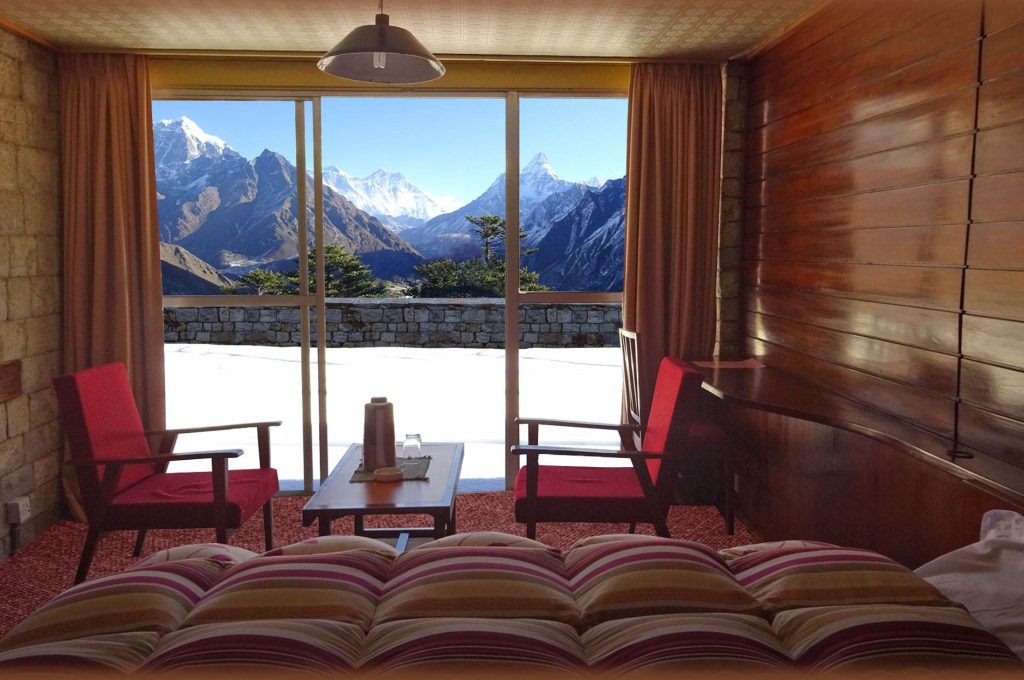
Altitude Map
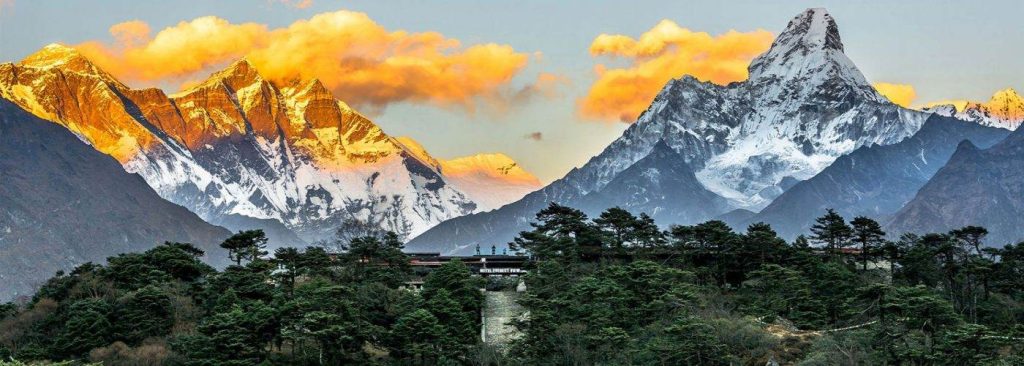
What's Included
- Arrival & Departure: Airport – Hotel transfer – Airport (Pick Up and Drop).
- Hotel Accommodation in Kathmandu: 2nights at Star categories hotel on twin sharing on bed and breakfast basis.
- Welcome Dinner and farewell dinner at Nepali culture restaurant in Kathmandu.
- Food & Lodging: 3 meals a day (BLD; including tea and coffee) along with accessible accommodation sharing at Hotel/Lodge during the trek.
- Permit: All necessary paper works: Sagarmatha National Park permit& Khumbu Rural Municipality entry fee.
- All government and local taxes if necessary.
- Insurance: Insurance for all involved Nepalese staff during the trek.
- Trekking Map: Everest Region Trekking map.
- Member transportation: – Air Transportation: (Domestic Flight) Fly from Kathmandu – Lukla and while returning Lukla.
- Drinking: 2 liters of boiled water to carry on thermos per day per member.
- Guide: Government licensed Guide (English speaking) during the trek
- Porter: Porters (2 trekkers: 1 porter) up to 15kg during the trek.
- Insurance of guide and potter.
- Comprehensive Medical kit.
What's Not Included
- Air Fare: International flight airfare (from and to Kathmandu).
- Nepal entry visa fee.
- Extra night in Kathmandu: Extra nights’ accommodation in Kathmandu. In case of early arrival or late departure, early return from Trekking (due to any reason) than the scheduled itinerary.
- Personal Insurance: Travel and high-altitude insurance, Accident, Helicopter medical & emergency evacuation. *Mandatory
- Personal Expenses: Telephone calls, Internet, Toiletries, battery recharge, hot shower, laundry, soft drinks, beer, and any alcoholic beverages.
- Personal Equipment: Clothing, Packing Items or Bags, Personal Medical Kit, Personal Trekking equipment.
- Rescue Evacuation: Medical and emergency rescue evacuation costs if required. (Rescue, Repatriation, Helicopter, Medication, Medical Tests and Hospitalization costs).
Equipment List
What to bring ?
General
Tailor Your Holiday
Everyone has their own preferences in terms of destination, journey time, and budget. As a result, sticking to our plan isn't necessary. We will create a personalized itinerary for you that includes accommodations, transportation, meals, and tour guides. We guarantee you the best Tailor-made Package because this is your trip. You have the option to personalize it, as your liking. Let us Plan together to make your Vacation worth it.
Fixed Departure
Why Travel With Us?
Secure Online Payment, No Credit Card Fee
Travel with Locals. Support Locals
Lifetime Deposit
Private & Tailor-Made Trips
24/7 International Support
Support Local Communities & Donate to Charity
All Inclusive Price
Secure Online Payment, No Credit Card Fee
The ideal season to travel
January:
Nepal’s trekking off-season is in full effect in January, with low tourist numbers across the nation. The spectacular views and the fact that you’ll have the trails to yourself make this a surprisingly fantastic time to walk across the trails if you’re prepared for chilly temperatures.
February:
While much of Nepal remains freezing in early February, the temperature begins to rise later in the month. The mountains are still cold, and there will be snow, but winter is coming to an end. The average February temperature in Namche Bazaar (11,290 feet/3440 meters) is 43°F (6°C), which isn’t too cold but certainly not warm.
March:
March marks the start of spring, one of Nepal’s two high seasons. While temperatures in the mountains will likely remain chilly, and snow will likely remain in certain areas, pathways will begin to soften. In March, trekkers returned in greater numbers, and there are numerous reasons for this. While March isn’t as crowded as April, the normal Everest Base Camp (EBC) route soon overflows during this season. Crimson rhododendrons can be seen in March month.
April:
April, as of March, is a popular trekking month in Nepal. The monsoon rains are still some weeks away, and temperatures are normally pleasant or at least not too chilly in the high Himalayas. In April, temperatures in the Himalayas are still cooler: 34°F (1°C) to 53°F (12°C) in Namche Bazaar (11,290 feet/3440 meters), an important destination on the EBC climb. At higher elevations, temperatures will be cooler.
May:
May marks the beginning of the Everest climbing season, as weather conditions on the mountain are most ideal at this time of year, although these conditions are very different from what normal trekkers will find at lower altitudes. Although the number of trekkers in Nepal decreases in May as humidity and temperatures rise in preparation for the monsoon season, the trail to EBC is an exception. For nature lover, May and June is the best time to trek.
June:
By mid-June, monsoon rains had arrived, and most trekkers had left the paths. The conclusion of the Everest-climbing season normally occurs in the first half of the month. However, even once the rains begin, it hardly ever rains all day every day, so if you’re prepared for rainy weather and understand that humidity and rain clouds may hamper your views, June isn’t a bad month to trek in the Everest Region. Furthermore, the higher you climb in height, the less probable it is that it will rain.
July:
In July, Nepal’s high rainfall keeps most trekkers off the trails. However, individuals who are well-prepared with good rain gear and are willing to accept some potential travel delays can still enjoy their climb to Everest Base Camp. In July, the temperature in Namche Bazaar is pleasant, with an average high of 60°F (16°C). The further you travel into the mountains, the cooler it gets and the less rain you get, however, it will almost surely pour at lower elevations. There’s also a danger of mudslides and landslides disrupting hiking trails. The most important festival of Sherpas, “Dumji festival” falls during the end of June or early July.
August:
The monsoon season in Nepal begins in mid-June and lasts until mid-September. In July and August, the Everest Region, like the rest of the country, receives the most yearly rainfall. It also has the hottest temperatures; while the high Himalaya is never ‘hot,’ normal highs in August in Namche Bazaar are around 60°F (16°C).
The higher you go into the mountains, the cooler it gets and the less rain there is. In August, there’s also a danger that landslides would close hiking routes and make paths muddy.
September:
By mid-to-late September, the monsoon rains will have passed, and the weather will be suitable for trekking in Nepal once more. Even though excessive humidity may hide some mountain views, there’s still a possibility to see amazing views early in the morning. In addition, in September, the popular Everest region trek is less crowded than later in the autumn season.
October:
The month of October is the busiest for trekkers in Nepal. The weather is quite stable, with a clean, rain-free sky providing superb mountain views. However, crowds are at an all-time high, with the Everest region Trek being the most popular in the country. When visiting the Everest region in October, it is critical to plan properly far ahead as possible. In late Oct or early Nov full-moon, people in Everest region celebrate the famous 19 day long colorful festival “Mani Rimdu” in Tengboche Monastery, but the last 3 days of this festival is only open for public.
November:
In November, there is extremely little possibility of rain in the Everest region—it is the driest month of the year. This means that humidity is at an all-time low, and the chances of seeing clear mountain views are greater than at any other time of year. Temperatures are a few degrees lower than they were in October, with a low of 26°F (-3°C) in Namche Bazaar (11,290 feet/3440 meters) with a high of 48°F (9°C) on average. Temperatures will be even cooler at higher elevations. However, given the low chance of rain and clear skies, November is the greatest month of the year to hike to Everest in terms of weather.
December:
As winter approaches, the trekking trails become empty except for the most courageous adventurers. However, if you’re properly equipped for cold temperatures, December is a great season to walk to Everest Region. The weather in December isn’t quite as freezing as it is in January, but the difference isn’t significant. This month, the average high in Namche Bazaar is 44°F (7°C), while the average low is 21°F (-6°C). Because Namche is only 11,290 feet (3,440 meters) above sea level, temperatures will be much cooler higher up.
Flight to Lukla
Almost every trip begins with a flight from Kathmandu to Tenzing Hillary Airport in Lukla, a small single-landing runway airport high in the Himalayas. As it is the easiest way for your trek to the hotel Everest view.
- Lukla Airport is also known as the most dangerous airport in the world. This airport, which is only open when the weather is calm, and visibility is excellent.
- The Flight from Kathmandu to Lukla is about 30 min and the flight from Manthali to Lukla is about 20-25 min. Flight from Kathmandu to Lukla by helicopter is about 45 min.
- It’s impossible to say whether your Lukla flight will be canceled or not. If this occurs, your trip may be extended by one or two days. So, plan and add buffer days to your itinerary to ensure you don’t miss your international flight.
- Flights to and from Lukla are currently operated from Manthali Airport in Ramechhap rush hours at Kathmandu Airport during the high season (spring and autumn). Kathmandu is 132 kilometers (4 hours and 30 minutes) away.
- Helicopters have a little more flexibility when it comes to arriving at Lukla and can frequently make the flight in weather or visibility that a small plane would not be able to make. It is sometimes doable to switch your flight to a helicopter, but this can be expensive and there is no guarantee that you will arrive on time.
Altitude sickness
Altitude sickness is a sneaky monster that may attack even the fittest trekkers. These demands do everything in your power to prepare for altitude trekking and take things carefully throughout your Everest region journey. With increasing altitude, the amount of available oxygen decreases, which is the primary cause of high-altitude sickness.
Your body requires time to adjust to thin air, so start at a lower altitude and work your way up. Some of the symptoms of Altitude sickness are:
- Increased breathing.
- Increased urination.
- Restless sleep.
- Periodic breathing at night because of altitude.
- Dehydration.
- Shortness of breath.
- Extreme fatigue.
- Respiratory failure.
- Cerebral edema.
- Coma.
Certain care should be made to ensure that the situation does not worsen. However, if the symptoms worsen, you may need to return to a lower height and seek medical help. There are, however, several other precautions you may take while trekking in the Everest region to lessen your risk of altitude sickness.
- Trekkers can modify their bodies by slowly and gradually climbing, as our bodies require time to adjust to the oxygen level. At least one day of acclimatization rest is required for high altitude trekking, and you should go as high as possible before returning to a lower height for the night.
- You should do various strength training exercises such as running, cycling, jogging, push-ups, and going to the gym to acquire strength and stamina for your adventure.
- As the air gets increasingly thin, an increase in elevation reduces oxygen levels, and in the Everest region trek, an increase in altitude also means less vegetation. The consumption of alcoholic beverages, cigarettes, and tobacco decreases the body’s water content.
- The greatest remedy is to always stay hydrated. On your walk, instead of drinking cooled water, drink warm water.
- Diamox is the most effective altitude sickness medication; thus, you should bring a subscription with you on the trek. However, you should consult with your physician to see whether it is advantageous.
So, here you have it: everything you need to know about altitude sickness before trekking to Everest Region. Please contact us if you have any questions.
Things to know about Everest region
Drinking-Water
Especially for trekkers, it is very necessary to hydrate your body at a higher altitude than in lower elevations to avoid dehydration and altitude sickness. Lack of fluid can be the main hindrance during the trek. You should hydrate your body with at least 3-4 liters of water daily (Tea, soup, or normal drinking water).
Throughout the trek, you will come across tap and spring water, but it is not safe to drink without purifying it. You can buy the plastic bottle water in the teahouses but becomes expensive as you climb in the higher altitude, and it pollutes the local ecosystem, therefore we recommend you to use a Reusable water bottle or water pouch favorable for both hot and cold water. During this trek, you may be charged from 0.50 $ to 5$ for a sealed water bottle. In Namche per liter of water bottle cost 1$.
Here are some ways that you can use to make the water drinkable.
- Boiled water
Boiling water is the best way to purify the water. As we are climbing to a higher altitude you need to boil the water for about 3-minute and season it with a pinch of salt before drinking. The Teahouse provide free cold water, however, heated water cost 1 USD per liter.
- Purification tablets or electrolyte powder.
Purification tablets like chlorine or iodine tablets are commonly used tablets by trekkers to disinfect the water. 1 tablet is enough for a liter of water. It takes around 30 min for the tablets to dissolve and become drinkable. Water, purified by tablets may leave a taste in your mouth.
Electrolyte powder is another option. Electrolyte powder is a better way to purify water than tablets because electrolyte powder contains minerals such as salt, Potassium, Magnesium, which are important for your body during the trek.
- UV Light water purifier/ SteriPEN.
It is a simple, effective, economic, and environment-friendly way to purify water. It kills the bacteria and virus within 10 sec by exposing them to ultraviolet light using Steripen, without changing the flavor of the water. This is a highly recommended method of purifying water.
Essential Backpack items
The bag of a trekker also reveals the trekker’s level of experience. A good trekker should be a smart backpacker. You should be pre-prepared for the things that you need in the trek.
Here are some of the things that you need to take with you for the trek.
Travel documents
- Airline tickets with the itinerary.
- Travel insurance policy documents.
- Valid passport.
- Copies of passport.
- Passport-sized photos.
- Nepalese cash.
- Travel permits.
Clothing
- A pair of waterproof trekking shoes or hiking boots.
- A pair of flip flop slippers or running shoes.
- 2 sets of thermals (leggings and tops)
- 3-4 pairs of hiking long sleeve shirts or tops.
- Pairs of hiking shorts and pants.
- Fleece jumpers or a set of tracksuits.
- Good quality windproof down jacket.
- Lightweight waterproof rain jacket and pants.
- Neck gaiter, leg warmer, and packet of pocket hand warmers.
- 4-5 pairs of quick-dry socks, underwear, sports bra.
- Pair of inner and outer gloves (for winter).
- Knitted Hat, sun cap, beanie, or bandana.
- Sunglasses or eyeshade.
Trekking equipment
- Waterproof trekking bag of 40-50liter and Rucksack of duffel bag (if your backpack is not enough for all your item and need a potter).
- Reusable water bottle (both hot and cold) of at least 1-2litre.
- A sleeping bag and sleeping bag liner.
- Trekking stick/ poles
- Crampons (if you are trekking in the Winter season, Jan-Feb).
- LED Headtorch or solar lamp (LuminAID Lamp)
- Stuff sacks, plastic bags.
- Plug adapter, Charging appliances, power bank, batteries.
- Pocket knife.
- Travel Wallet.
Toiletries
- Rolls of Toilet paper, wet wipes, and tissue.
- Medium-sized quick-drying towel.
- Toothbrush and toothpaste.
- Hand sanitizer.
- Sunscreen, lip balm, body lotions.
- Deodorants.
- Portable mirror.
- Shampoo and soap.
Personal First Aid Kit
- Antibiotics
- Painkillers, Paracetamol, ibuprofen, aspirin, Nicole
- Sanitary pads
- Bandage.
- Anti-inflammatory spray.
- Anti-Nausea tablets.
- Anti-diarrhea pills or power.
- Altitude sickness tablets.
- Water purifying tablets or electrolyte powder.
- Mosquito and Insect Repellent
- Salt or anti-leech oil (If traveling in the rainy season, July- Aug).
- Earplugs
You can buy or hire trekking clothes and equipment in Kathmandu. If you are buying it, you have to allow an extra day for shopping; however, if you are hiring it, you must inform us in advance so that we can arrange it before you arrive in Kathmandu. This way you can reduce the weight of your luggage and save time and money.
Branded trekking clothes and equipment are available around the Thamel area at a reasonable price.
Note– Kathmandu- Lukla flight has a luggage allowance of 15 – 20 kg per person. For extra baggage, they charge 2$ – 3$ per kg. So, you can wear your trekking boots and jacket to reduce the weight. Have a hand carry bag for your passport, money, medicine, and a pair of clothing. You can leave some unnecessary items in the hotel in Kathmandu also.
Accommodation, Meal, and Transportation
Accommodation
We will accommodate in star hotel during our stay in Kathmandu. In Lukla, Namche Bazaar, we will stay in lodges. One night in Syangboche we will stay in Hotel Everest View (the only hotel in Syangboche).
Meal
During the trek, we will provide you three-time meals. You can choose from the given menu.
Breakfast– French toast, Cornflakes, Cereal, Pancakes, Bread butter, Eggs, Oatmeal, Porridge, Tea, etc.
Lunch– Dal Bhat (Rice, vegetable curry, meat curry, Lentils, Tomato Chutney, Salad, Papad) Vegetable noodle soup, Chicken noodles soup, Garlic soup, Fried noodles, Fried rice, Thukpa, Fried potato, Mo: Mo, etc.
Dinner– Dal Bhat (Rice, vegetable curry, meat curry, Lentils, Tomato Chutney, Salad, Papad) Vegetable noodle soup, Chicken noodles soup, Garlic soup, Fried noodles, Fried rice, Thukpa, Fried potato, Mo: Mo, etc.
Besides these, there are a variety of other options of food. You can buy it from your pocket.
Transportation
By Bus- From Kathmandu airport to hotel at Kathmandu and vice-versa.
By Air- Flight to Nepal.
Flight from Kathmandu to Lukla and back.
Guide and Staff Arrangements
Throughout the trek, all your activities will be handled by our well-qualified and professional staff. We will do all the escorting. We are providing you with a highly experienced and licensed local Sherpa guide with fluent English speaking and has excellent communication skills. We will accompany you from Kathmandu and guide you to Namche Bazaar- Hotel Everest View. Each group of 4-5 trekkers will be assigned an assistant guide, as well as a porter for two trekkers (2*15kg =30kg). If your luggage weighs more than 15kg you will be provided a porter individually but you will be charged for 2 people.
All our lead guides, assistant guides, and potters are well professional and experienced. So, we hope for your respect and cooperation with us throughout the trek.
A typical day on the trek to Hotel Everest View
Every day will begin with the ringing of your alarm clock at 6 a.m. and a knock on your door from your guide with the invitation of breakfast. Get up, have breakfast, pack your backpack and get ready to start your day’s walk by 7 a.m.
You’ll wander along the trail enjoying the scenery, clicking photos, creating memories, passing by other travelers, interacting with your guide, hearing each other’s stories. Lunch will be served at a local teahouse in the late afternoon (1-2 am). Having lunch and an hour of rest, we will proceed to the day’s final destination as per the itinerary.
On arrival at the destination, check into your accommodation. Get freshen up and some rest. As every teahouse where we stay has a large common dining area with a wood-burning stove in the center, there you will get to meet other travelers. You can sit there, laugh at each other stories, play cards, sing songs, play music, and have a good time. This will help you forget all the tiredness of the day. Later in the evening, you will have your dinner together. After dinner, your guide will give a short briefing about the next day’s trek regarding when you must get up when we have to start our trek the next day, where we will stay the next day, how many hours we have to walk, and so on.
During this trip, we will walk for a least 3 hours and a maximum of 8 hours. During the acclimatization day, hike around the small peak or viewpoints. In this trek, we will be visiting the oldest village of the Everest region- Khumjung Village and staying at the hotel that is at the highest altitude in the world. Experience the magnificent view of Mt. Everest from the Hotel Everest view and Khunde peak. Your hard walk will be paid off on reaching the final destination with lifelong memories.
Nepal Tourist Visa and permits details
Visa procedure.
To travel to Nepal, you’ll need a tourist visa that is valid for the period of your stay in Nepal. Better, if you have a tourist visa valid for at least 2 months because anything can happen during the trip, and staying in Nepal after your visa expires would result in you paying a penalty. Apply for a visa at your nearest Embassy of Nepal or obtain an On-Arrival visa at immigration in Tribhuvan International Airport, Kathmandu. But it’s better to contact your nearest Nepalese Embassy.
Here are the documents that you need to apply for the tourist visa.
- The Tourist Visa Application Form for Nepal (Fully completed online and printed)
- Original Passport with at least 2 blank pages and validity of at least 6 months.
- Photocopies of your passport’s information page.
- At least 2 recent passport-sized photos of yourself with white background.
- Proof of accommodation in Nepal.
- Valid travel and return flight tickets.
- A bank statement from the last 3 months with a minimum closing balance of NPR2,00,000.
- Receipt of the visa fee for Nepal.
Note: 15 days tourist visa costs USD 30. Our trip is for 14 days, so it’s better to apply for 30 days tourist visa that costs USD 50.
Entry permits and Requirements
The Entry permits that you need for the trekking in the Everest region are;
| Trekking permits | Foreign Nationals | SAARC nationals | Nepali | |
| 1 | Khumbu Pasang Lhamu Rural Municipality Entrance Permit | NPR 2,000 per person (for the first 4 weeks)
NPR 2,500 per person (beyond 4 weeks) |
NPR 2,000 per person (for the first 4 weeks)
NPR 2,500 per person (beyond 4 weeks) |
NPR 2,000 per person (for the first 4 weeks)
NPR 2,500 per person (beyond 4 weeks) |
| 2 | Sagarmatha National Park Permit | NPR 3,000 per person per entry + 13% vat.
(Approx. 34$) |
NPR 1,500 per person per entry +13% vat
(Approx. 15$) |
NPR 100 per person per entry +13% vat
(Approx. 1$) |
Note: A Khumbu Rural Municipality Entrance permit must be obtained from the Rural Municipality desk at the Lukla checkpoint.
Permits for the Sagarmatha National Park can be obtained from the Nepal Tourism Board in Bhirkuti Mandap, Kathmandu, and from the Sagarmatha National Park entrance gate at Monjo. To save time, we recommend that you obtain a Sagarmatha National Park Permit in Kathmandu.
For more information about Trekking Permit here is the link.
(If you are traveling from a travel/trekking agency your agency will arrange all the Permits.)
Documents required to get the Trekking permits.
- Complete the form with your passport details.
- 2 Passport size photo.
- 2 Photocopy of passport valid for at least 6 months.
Travel Insurance
During the journey, you may encounter several unexpected incidents or losses. Trekking in Nepal is an adventurous and occasionally dangerous activity, especially at high altitudes. Trekkers must have travel insurance before visiting Nepal for trekking. During this trek, you may encounter a physical injury, illness, or an unexpected accident, and all the medical expenses and loss have to be borne by yourselves.
You need to choose an insurance policy that covers all of your possible risks from the start of your journey to your final destination. The following threats should be covered by your travel insurance:
- Cancellation of Domestic and International flights.
- Lost and stolen baggage and passport.
- Hospital and Medical expenses (physical injury, Acute Mountain sickness, Altitude sickness, sudden accident)
- Emergency rescue such as Helicopter.
- All high-altitude trek dangers up to 4,000m.
You need to choose your travel insurance wisely so that, in the case of such an incident, your travel insurance will cover the costs.
You can get your travel insurance in either your home country of Nepal.
Responsible Travel
As the Everest region is not only the gateway to Mount Everest but also renowned for its traditional culture and eco-friendly environment. All travelers should travel responsibly in these regions. You must respect the local people, their culture, religion and try to limit any harmful acts that will harm their culture and environment. We expect you to properly dispose of all the plastic waste (food warmers, plastic water bottles, etc.). On your way to Everest Base Camp, you may encounter any rare species (Lophophorus, Musk Deer, Himalayan Tahr, Blood Pleasant, Himalayan monals, Martens, Tibetan Snowcock, Golden Eagle, and some other) and you should avoid disturbing them. When visiting monasteries, you must follow the monastery’s norms. Your responsible travel will help Nepal achieve long-term sustainable tourism.
Electricity and Internet facility at Everest Region
Electricity facility.
Despite its difficult geography and weather challenges, the Everest region has been able to provide electricity and access to the Internet.
The lower Everest region (Lukla, Phakding, Namche, Pangboche) is hydroelectrically powered, thus you can enjoy free electricity and internet service.
Internet Facility and Service
Internet and network facility is needed to contact your family, friends, employee, to post updates and upload photos during the trek.
Everest link has been providing an internet service throughout the Everest region.
You can purchase an Everest Link WI-FI card at the lodges and use the Everest Link hotspots to connect to the internet anywhere on the path within Everest Region.
Cost of Everest Link WI-FI card:
-10GB= NRP 2000/ 17$
-20GB= NRP 3000/ 25$
(Valid for 30 days)
NCell and NTC cellular service has been providing the network and internet facilities in Everest Region. You can buy the NCell or NTC sim card from the stores either in Kathmandu for 1$ or in Lukla and Namche Bazaar for 3$-4$. By taking data packages you can use the internet from NCell and NTC up to Tengboche. NTC network service is also available in Gorak shep.
NTC cellular service is most preferred over NCell. NTC provides good service and signal connectivity, in comparison to NCell.
| Buy NTC data package
Dial*1415# |
Cost of data package in NTC:
-14GB=7$ (Valid up to 28days -30GB=15$ (Valid up to 90 days) |
Check balance
Dial *1415# |
| Buy NCell data package
Dial *17123# and select. |
Cost of data package in NCell:
-15GB=10$ -25GB= 12$ (Valid up to 30 days) |
Check balance
Dial*101# |
Document needed to buy a sim card.
For foreigner = 1 passport size photo, Passport photocopy, or valid identity card.
For Nepali = 1 Passport size Photo, Photocopy of Citizenship.
Some useful tips to reduce the use of electricity.
- Extra batteries for the camera.
- Power bank with 5000-10000mAh.
- The solar charger and solar lamp (Lumin Aid lamp).
- As possible less usage of a device with low brightness, GPS, and WI-FI off.
Luxury Trek to Hotel Everest View
Trip Reviews
Lorem ipsum dolor sit amet, consectetur adipisicing elit, sed do eiusmod tempor


